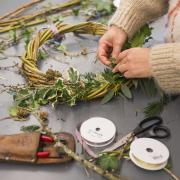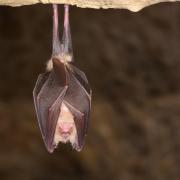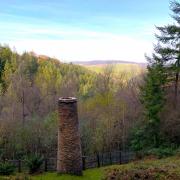The Mendip Hills is a landscape that has escaped many of the ravages of the modern world, its elevation makes it wet and windy and the thin, rocky soil make it unsuitable for many modern agricultural practices, such as deep ploughing or seeding arable crops. This means that the landscape still has features that have disappeared from much of our county, ancient woodlands fill the steep coombs and gorges, scrub banks wend along the slopes and flower rich meadows cover the plateau and southern aspect with a plethora of native wildflower species. It is not just plants that inhabit these rare and treasured habitats, many species of animal, from invertebrates to mammals, are still found on Mendip that have been lost from other environments.
One species that can still be found on Mendip is the black oil beetle. If you have never heard of this amazing invertebrate, it is not that much of a surprise as they are rare and have a very quirky lifecycle, but they are a key indicator of habitat health and these three factors (rare, quirky, indicative of health) are the reasons why it is one of the Champion Species for the Mendip Hills National Landscapes Team.
This big, beautiful, and interesting beetle is found where there are flower rich meadows and along woodland edges. It is easiest to spot the black oil beetles in early spring when both adult and larvae are active but often the adults can be found trundling through meadows and woodland edges, munching on grasses and other plants, searching for mates and suitable egg laying sites. To find the larvae, called triungulins, you need to look very closely at flowers, particularly yellow flowers, with celandine and dandelion being favourite, where they await their unsuspecting victims.
Although this beetle is stunning to look at, with its large body and often iridescent sheen, the black oil beetle's life cycle is its most quirky and fascinating feature. In early spring, the female oil beetle mates and goes in search of suitable places to lay her eggs, she lays the eggs in clutches of up to 1000 at a time in loose or disturbed soil and she may lay as many as 40000 eggs in her short adult life, she only lives from March through to later in this month of July.
When the eggs hatch the tiny larvae, the triungulins, which are no more than 1-2mm in length, climb up onto the flowers and wait there. When a solitary mining bee comes along to collect nectar and pollen from the flower the triungulin grab on to the bee’s hairs with their specially adapted hooked feet and hitch a ride back to the solitary bee’s nest. Once there, the triungulin drops off and waits for the bee to complete its nest, creating a stash of pollen, laying its egg, and sealing the nest tube. The triungulin then proceeds to eat the contents of the nest, so this beetle is a nest parasite of solitary bees, which is a very specialised lifestyle! The triungulin then goes through its life cycle in the bee’s nest, growing and shedding its skin multiple times before emerging the next spring as an adult to mate and begin the cycle again.
This nest parasitism may cause consternation for many, as we all love a solitary bee, but the immensely specialised nature of its lifecycle relies on the rare habitats that provide the food and homes for our solitary bees, and so without wildflower meadows there are no solitary bees and no black oil beetles. Parasites are often much maligned as we fear, and often loath, the activities they undertake, but they are great indicators of a healthy biodiverse system as all the components need to be in place for a parasite to thrive. The fact that Mendip is a stronghold for the black, violet and rugged oil beetles (there are only 5 species found in the UK now as 3 species are already extinct) exemplifies the quality of the landscape to be found on the hills.



























